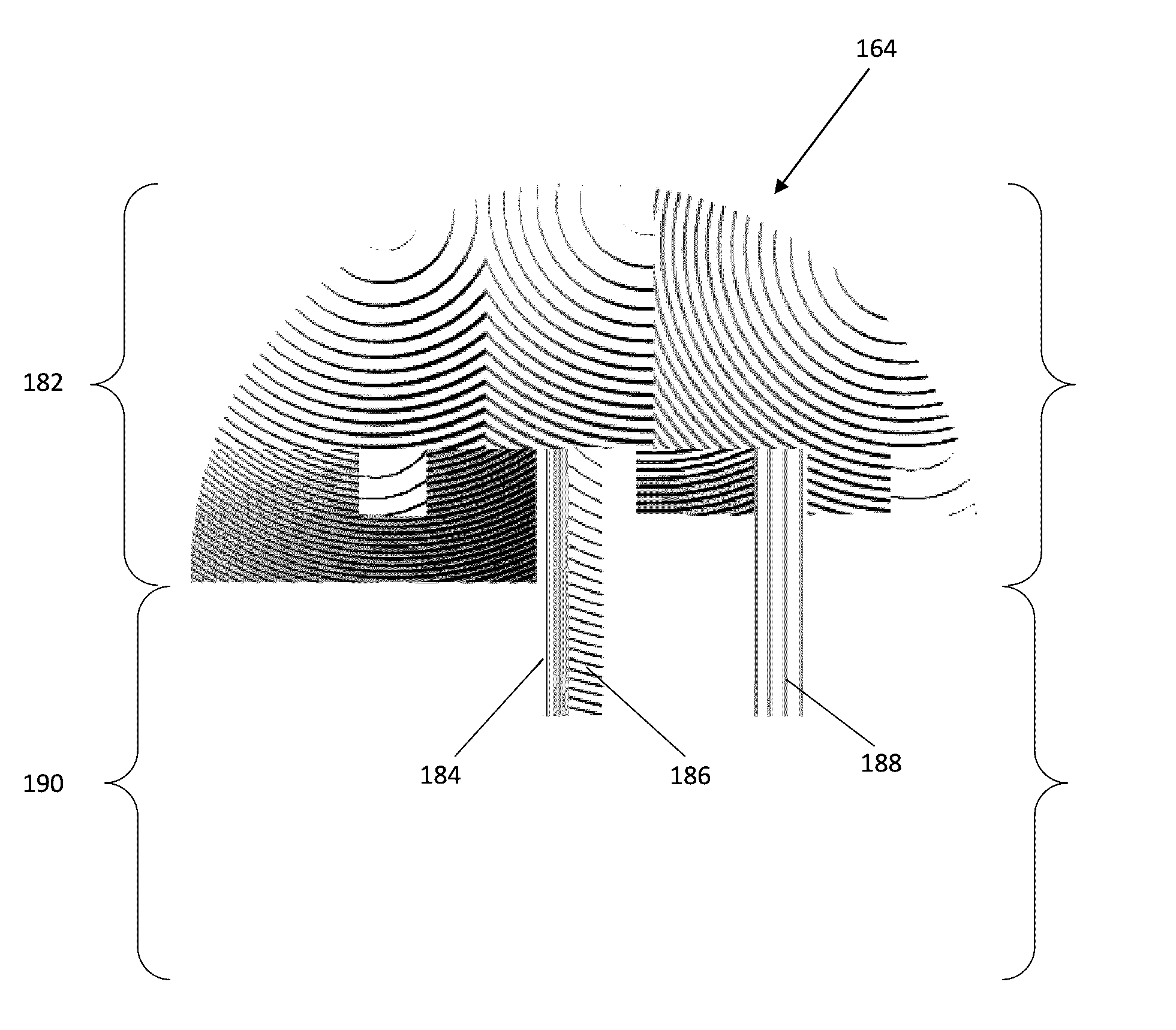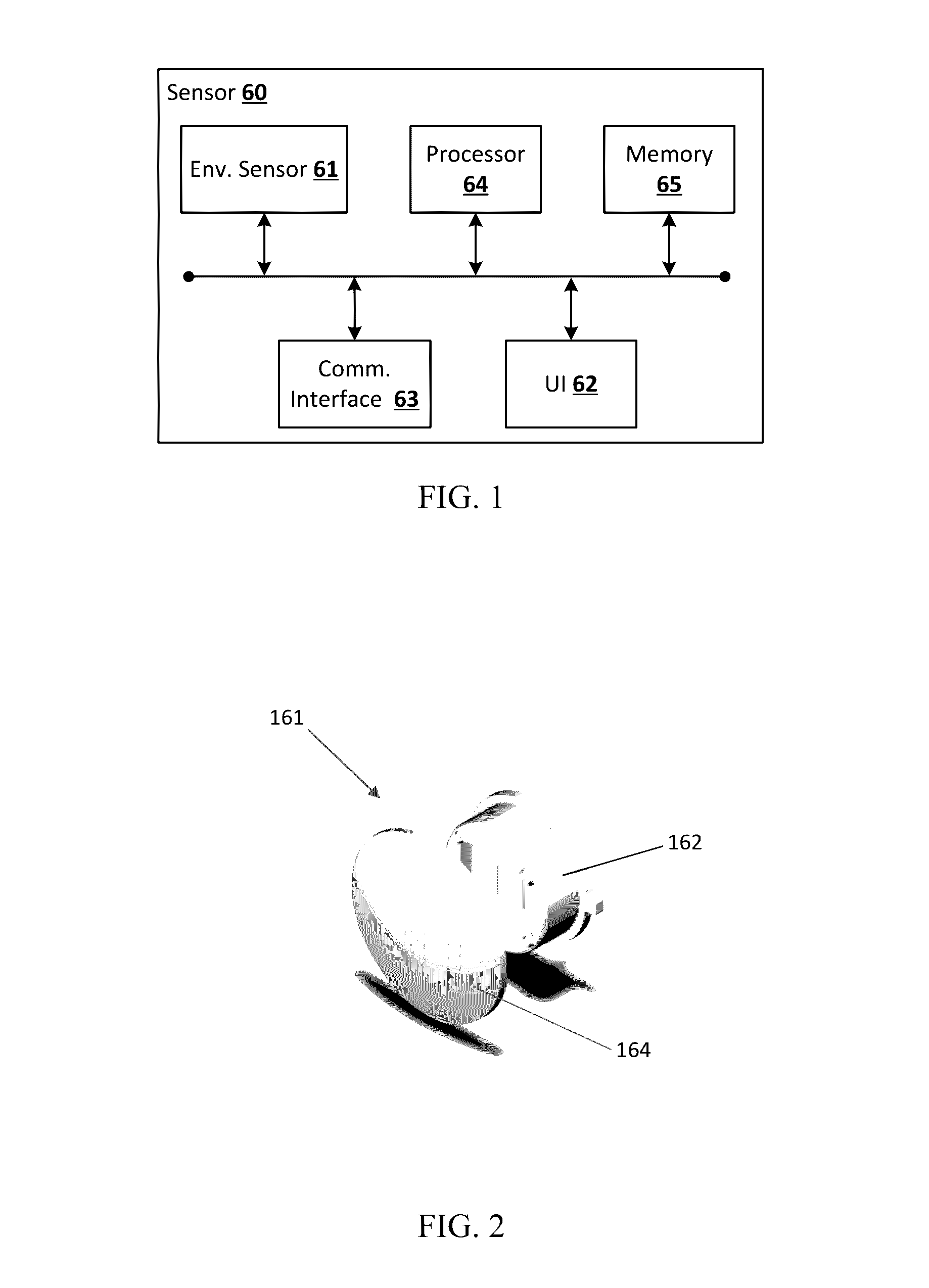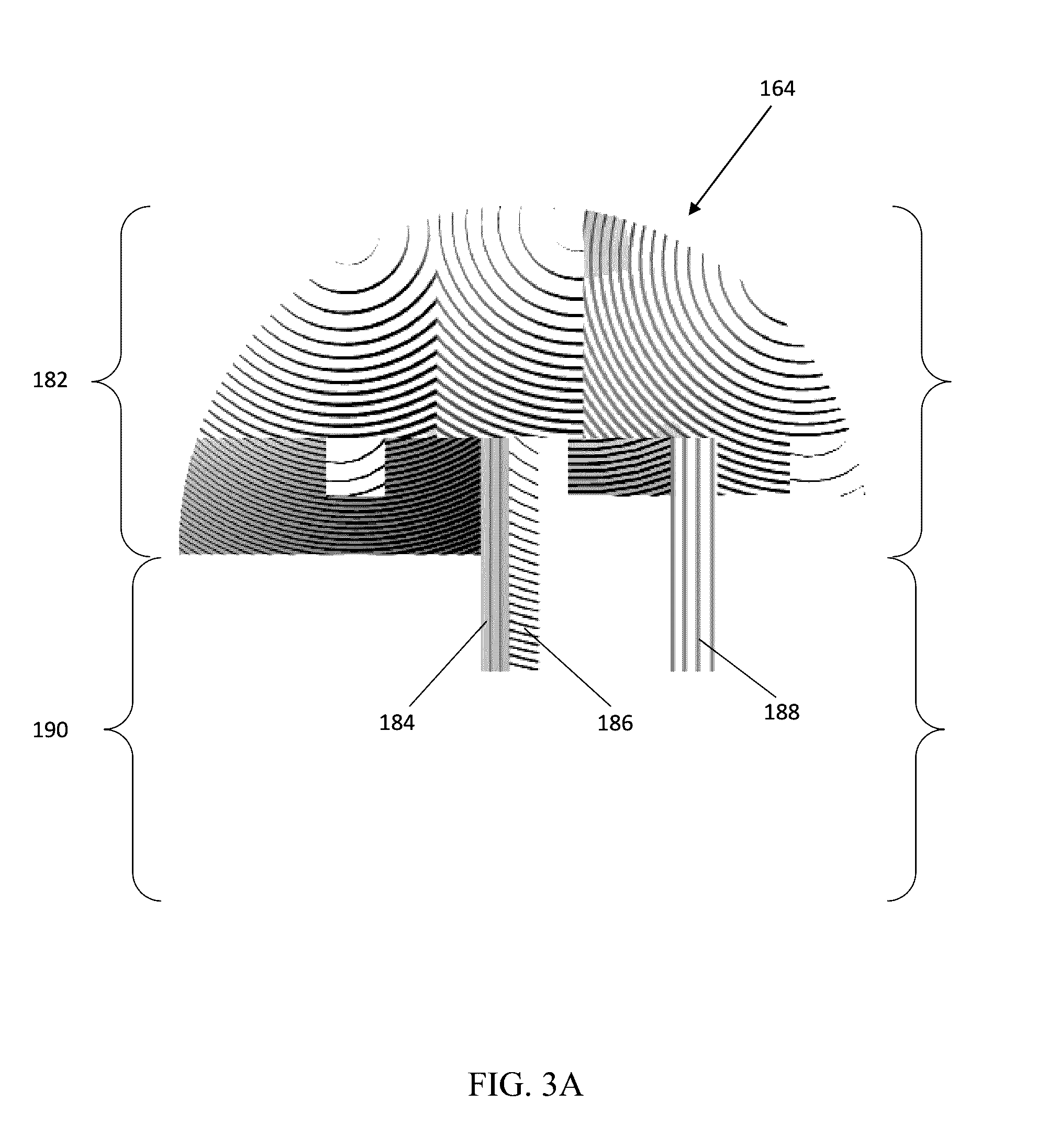Lens for pet rejecting passive infrared sensor
a passive infrared sensor and pet technology, applied in the field of lenses for pet rejecting passive infrared sensors, can solve the problems of difficult to distinguish between small pets located in a region close to the sensor, from humans located at a substantial distance from the sensor, and fails to substantially address the problems created, so as to achieve easy distinguishing
- Summary
- Abstract
- Description
- Claims
- Application Information
AI Technical Summary
Benefits of technology
Problems solved by technology
Method used
Image
Examples
Embodiment Construction
[0023]Implementations of the disclosed subject matter can enable pet immunity by creating weighted regions in the view of a sensor in which the maximum signal of a pet at a given range is exceeded by the minimum signal of a person at any range. This can establish a minimum threshold below which a detected object can be presumed to be a pet and above which it can be presumed to be a person, at all ranges.
[0024]Embodiments disclosed herein may use one or more sensors. In general, a “sensor” may refer to any device that can obtain information about its environment. Sensors may be described by the type of information they collect. For example, sensor types as disclosed herein may include motion, smoke, carbon monoxide, proximity, temperature, time, physical orientation, acceleration, location, entry, presence, pressure, light, sound, and the like. A sensor also may be described in terms of the particular physical device that obtains the environmental information. For example, an acceler...
PUM
 Login to View More
Login to View More Abstract
Description
Claims
Application Information
 Login to View More
Login to View More - R&D
- Intellectual Property
- Life Sciences
- Materials
- Tech Scout
- Unparalleled Data Quality
- Higher Quality Content
- 60% Fewer Hallucinations
Browse by: Latest US Patents, China's latest patents, Technical Efficacy Thesaurus, Application Domain, Technology Topic, Popular Technical Reports.
© 2025 PatSnap. All rights reserved.Legal|Privacy policy|Modern Slavery Act Transparency Statement|Sitemap|About US| Contact US: help@patsnap.com



